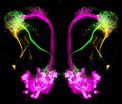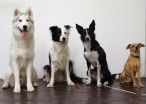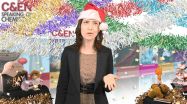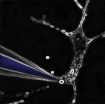(Press-News.org) A global fleet of composite planes could reduce carbon emissions by up to 15 percent, but the lighter planes alone will not enable the aviation industry to meet its emissions targets, according to new research.
The study, by the Universities of Sheffield, Cambridge and UCL (University College London), is the first to carry out a comprehensive life cycle assessment (LCA) of a composite plane, such as the Boeing Dreamliner 787 or Airbus 350, and extrapolate the results to the global fleet.
The LCA covers manufacture, use and disposal, using publicly available information on the Boeing Dreamliner 787 fuselage and from the supply chain - such as the energy usage of the robots that construct the planes. The study compares the results to the traditional - and heavier - aluminium planes.
Emissions during the manufacture of composite planes are over double those of aluminium planes. But because the lighter aircraft use significantly less fuel, these increased emissions are offset after just a few international flights. Over its lifetime, a composite plane creates up to 20 per cent fewer CO2 emissions than its aluminium equivalent.
Professor in Advanced Materials Technologies at the University of Sheffield, Alma Hodzic, says: "This study shows that the fuel consumption savings with composites far outweigh the increased environmental impact from their manufacture. Despite ongoing debates within the industry, the environmental and financial savings from composites mean that these materials offer a much better solution."
The researchers fed the data from the LCA into a wider transport model to gauge the impact on CO2 emissions as composite planes are introduced into the global fleet over the next 25 years, taking into account other factors including population, economic prosperity, oil prices and speed of adoption of the new technology.
The study - published in the International Journal of Life Cycle Assessment - estimated that by 2050, composite planes could reduce emissions from the global fleet by 14-15 per cent relative to a fleet that maintains its existing aluminium-based configuration.
Professor in Energy and Transport at UCL, Andreas Schäfer, explains: "The overall emissions reduction for the global fleet is lower than the reduction for an individual plane, partly, because by 2050, not all the fleet will be of composite construction. New planes entering the fleet before 2020 could still be in use by 2050, but the faster the uptake of this technology, the greater the environmental benefits will be."
Dr Lynette Dray from the University of Cambridge agrees: "Given that global air traffic is projected to increase four-fold between now and 2050, changing the materials used could avoid 500 million tonnes of CO2 emissions in 2050 alone, a value that roughly corresponds to current emission levels."
Professor Hodzic adds: "The industry target is to halve CO2 emissions for all aircraft by 2020 and while composites will contribute to this, it cannot be achieved by the introduction of lighter composite planes alone. However, our findings show that composites - alongside other technology and efficiency measures - should be part of the picture."
INFORMATION:
A team of Chinese and Italian scientists has joined efforts to provide a key to the understudied phaleratus group of blister beetles. During their research the scientists have also discovered a new species from the genus Hycleus, which they named after Marco Polo, as a tribute to their collaboration during the Ph.D. studies. The study was published in the open access journal ZooKeys.
The phaleratus group to which the new species Hycleus marcipoli belongs, is part of the Meloidae family commonly known as the blister beetle family. The representatives of this group get ...
This news release is available in German. Whether an odor is pleasant or disgusting to an organism is not just a matter of taste. Often, an organism's survival depends on its ability to make just such a discrimination, because odors can provide important information about food sources, oviposition sites or suitable mates. However, odor sources can also be signs of lethal hazards. Scientists from the BMBF Research Group Olfactory Coding at the Max Planck Institute for Chemical Ecology in Jena, Germany, have now found that in fruit flies, the quality and intensity of ...
Researchers studied 414 people with severe dementia along with their carers in England, Estonia, Finland, France, Germany, the Netherlands, Spain and Sweden. The study gathered information on quality of life, activities of daily living such as bathing, feeding and dressing and presence of depressive symptoms using standardised measures.
In the groups studied, 37% of the 217 people living in the community showed signs of depression compared to 23% of the 197 in care homes. It is one of the few studies comparing similar groups of people living at home and in nursing homes.
Professor ...
Some neurons are more active than others, even when they are positioned right next to each other and are one and the same neuron type. Dr. Jean-Sébastien Jouhanneau and Dr. James Poulet of the Max Delbrück Center for Molecular Medicine (MDC) Berlin Buch have discovered the cause for this phenomenon. They found that the more active neurons in the somatosensory area of the brain respond to a broader receptive field and probably play a particularly important role in our sensory perception. The findings of the researchers, who also work at the NeuroCure Cluster of ...
People and animals have been shown to discriminate between quantities. Lions, chimpanzees and hyenas, for example, will only approach a group of attackers if their own group outnumbers that of the intruders. These animals use numerical information to make decisions about their social life.
Testing numerical competence
In 2012 Friederike Range and Zsofia Virányi from the Messerli Research Institute at the University of Veterinary Medicine Vienna showed that wolves are capable of discriminating between different food quantities. In their present study, they asked ...
Stimulants use such as cocaine and amphetamine is associated with a nearly two-fold greater likelihood of suicidal behaviour amongst people who inject drugs, say researchers at the University of Montreal and the CHUM Research Centre. Drug addiction had already been identified as a major risk factor for suicide, and it is in fact the cause of ten percent of deaths among drug users. The data from this groundbreaking study could help develop and evaluate more appropriate suicide prevention efforts in this highly vulnerable population.
The researchers were able to explore ...
GPs should consider a more overt discussion with patients when referring them for further investigation of symptoms which may indicate cancer, according to a paper published in the British Journal of General Practice.
In an NIHR-funded study, researchers from the Universities of Bristol, Cambridge, Durham and Exeter conducted interviews with patients being referred for possible lung and colorectal cancer.
They found that patients were rarely involved in the decision to be referred for investigation and that reasons for referral tended to be couched in non-specific ...
WASHINGTON, Dec. 16, 2014 -- It's been a holiday decoration staple for decades, and it turns out that silver stuff hanging from your tree has quite a storied past. Tinsel has been made out of everything from real silver, to lead to other dangerously flammable materials. This week's Speaking of Chemistry decks your halls with the history of tinsel. Check it out at http://youtu.be/fql3aCuu1l0.
INFORMATION:
Speaking of Chemistry is a production of Chemical & Engineering News, a weekly magazine of the American Chemical Society. The program features fascinating, weird and ...
University of Guelph researchers hope their new discovery will help combat a disease killing honeybee populations around the world.
The researchers have found a toxin released by the pathogen that causes American foulbrood disease -- Paenibacillus larvae (P. larvae) -- and developed a lead-based inhibitor against it.
The study was published in the December issue of the Journal of Biological Chemistry.
The finding provides much-needed insight into how the infection occurs, said Rod Merrill, a professor in Guelph's Department of Molecular and Cellular Biology and a ...
PROVIDENCE, R.I. [Brown University] -- Newly published research provides the first demonstration of how a genetic mutation associated with a common form of albinism leads to the lack of melanin pigments that characterizes the condition.
About 1 in 40,000 people worldwide have type 2 oculocutaneous albinism, which has symptoms of unsually light hair and skin coloration, vision problems, and reduced protection from sunlight-related skin or eye cancers. Scientists have known for about 20 years that the condition is linked to mutations in the gene that produces the OCA2 protein, ...




